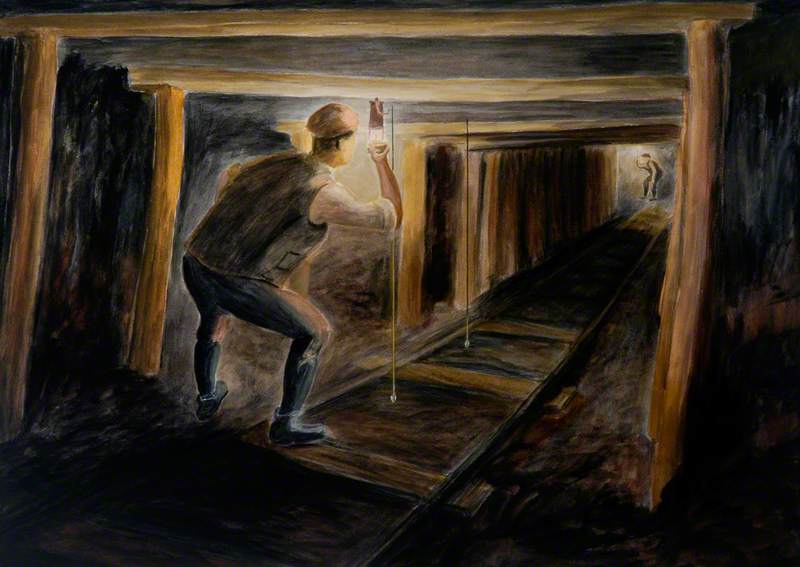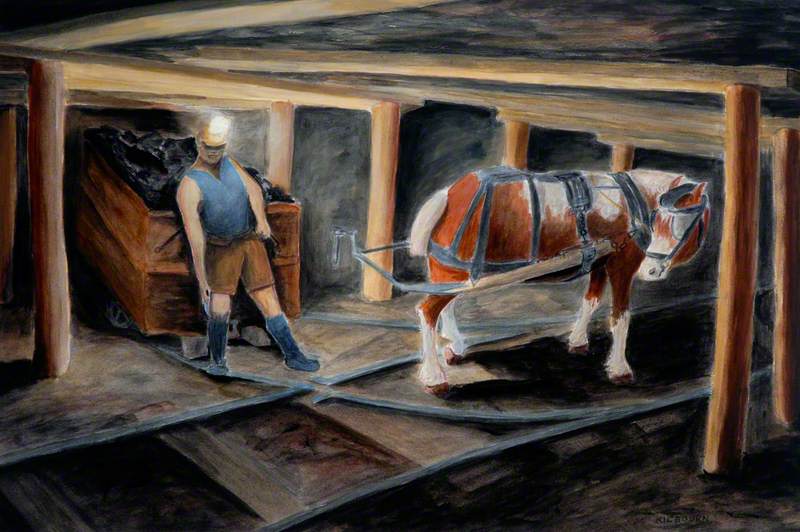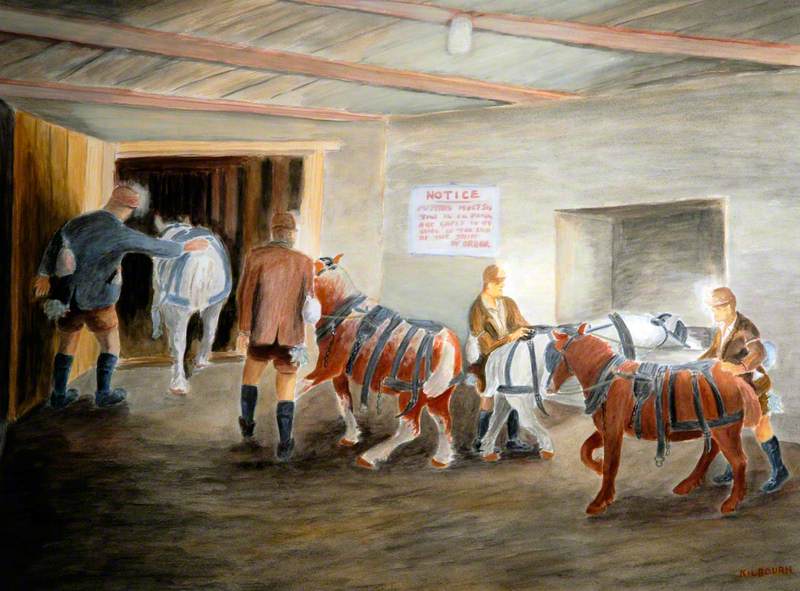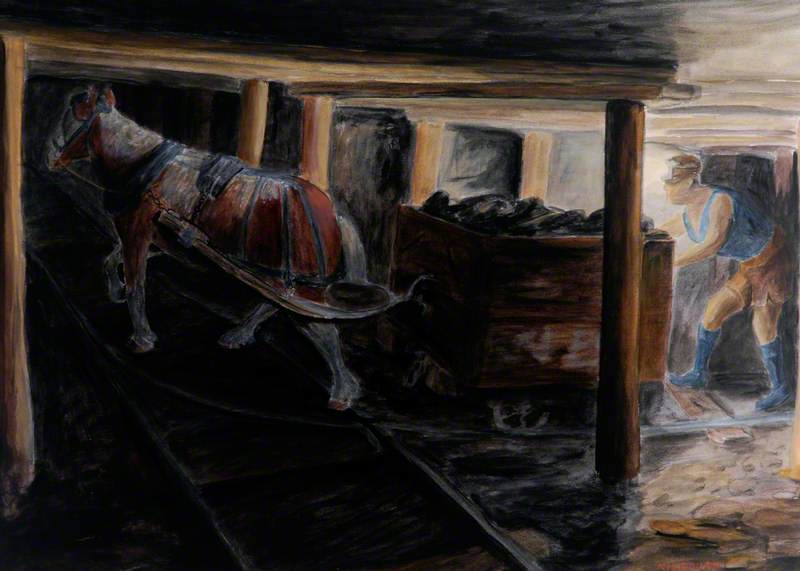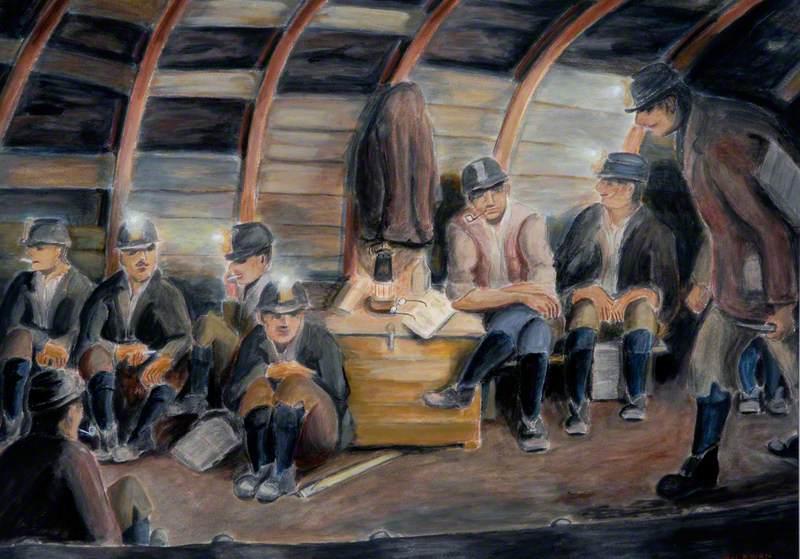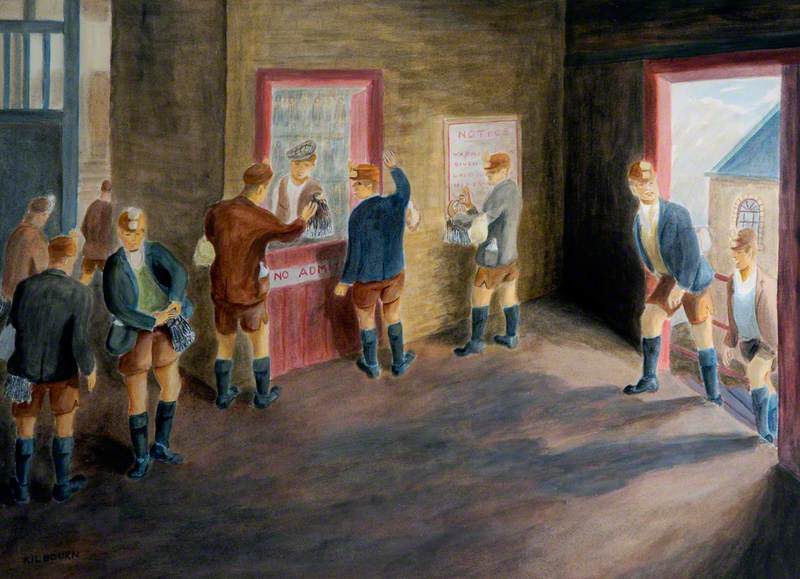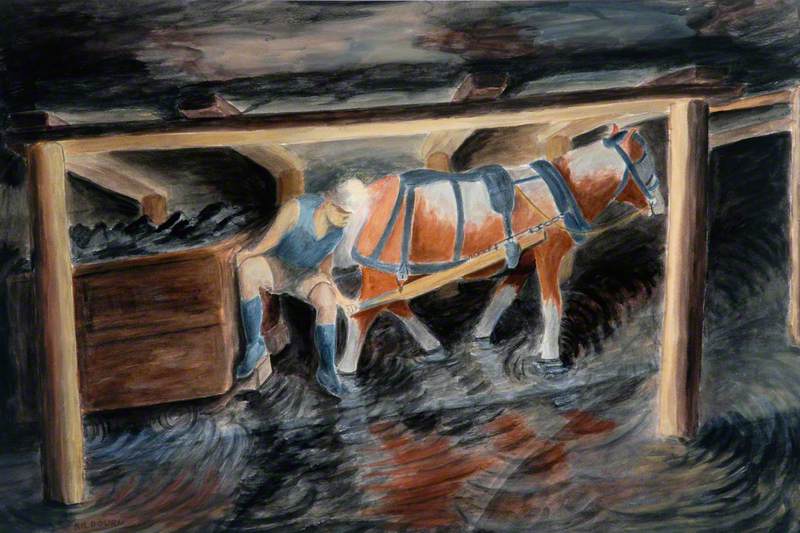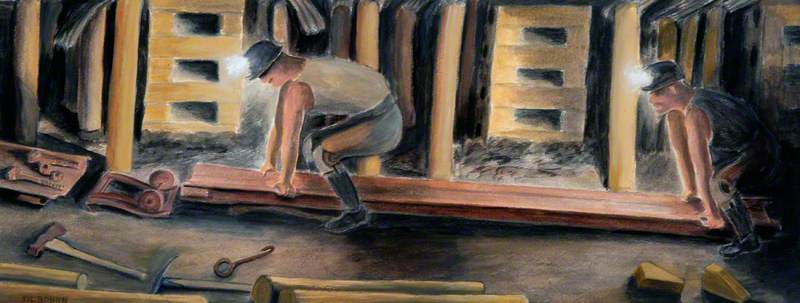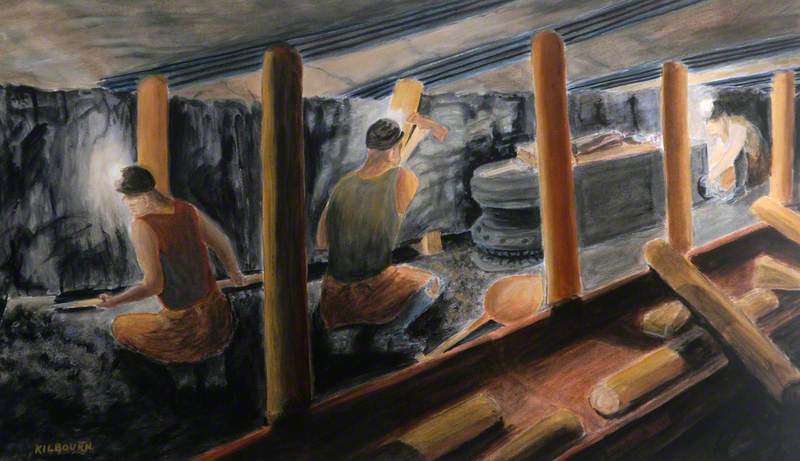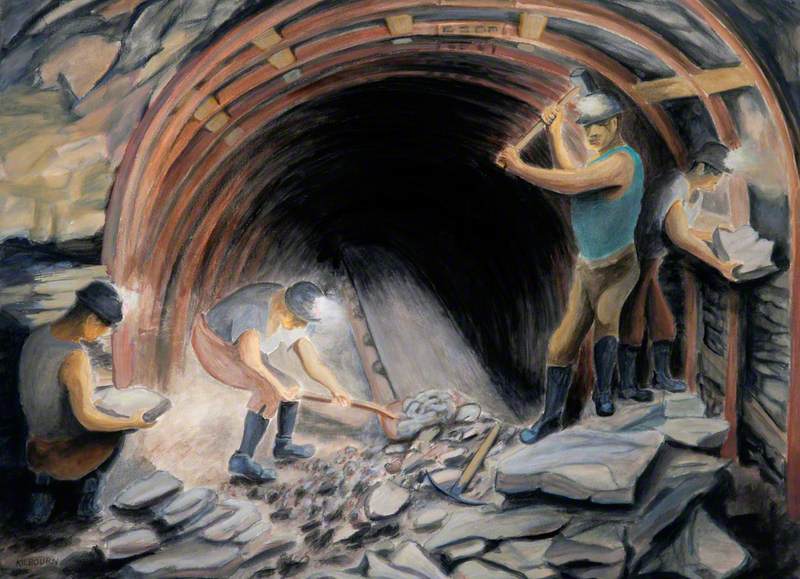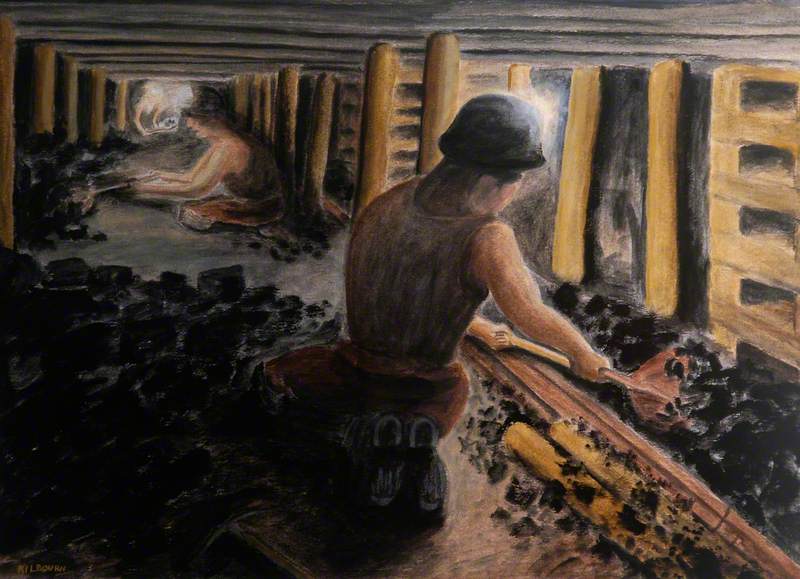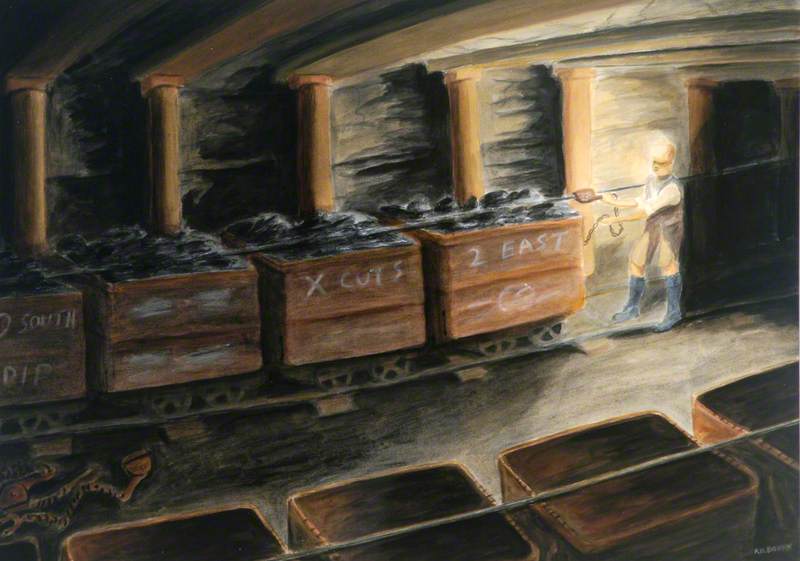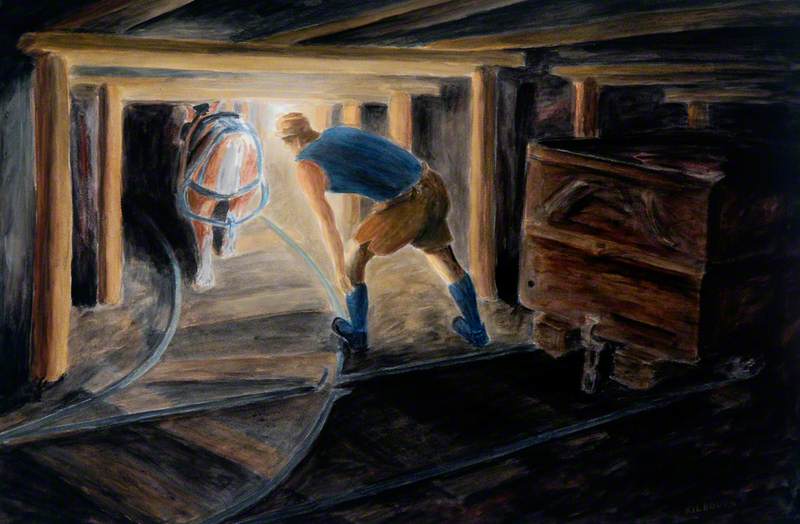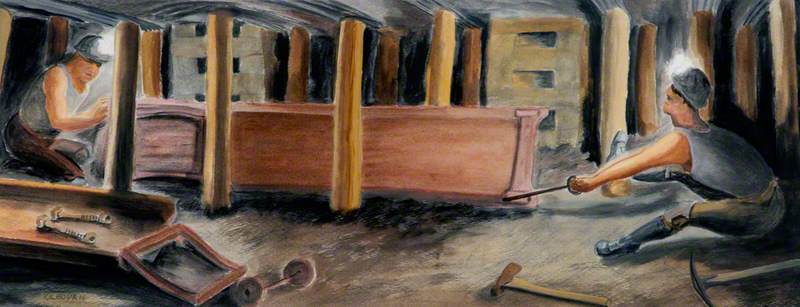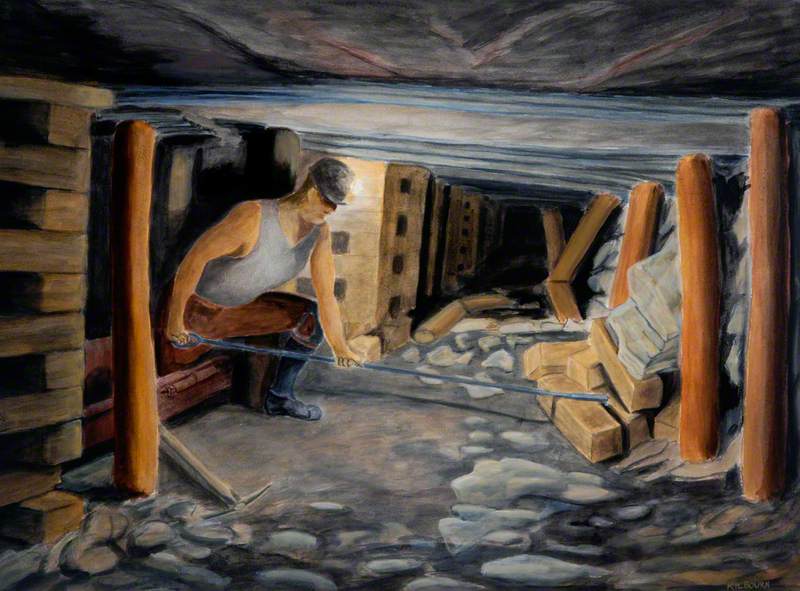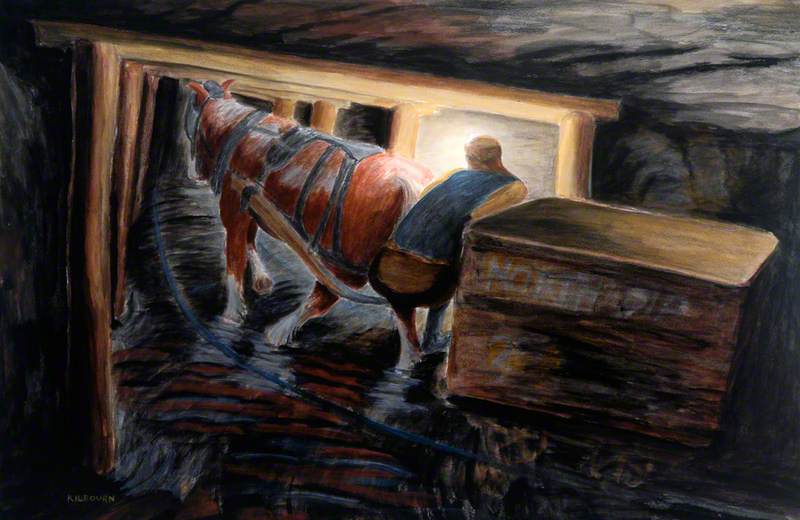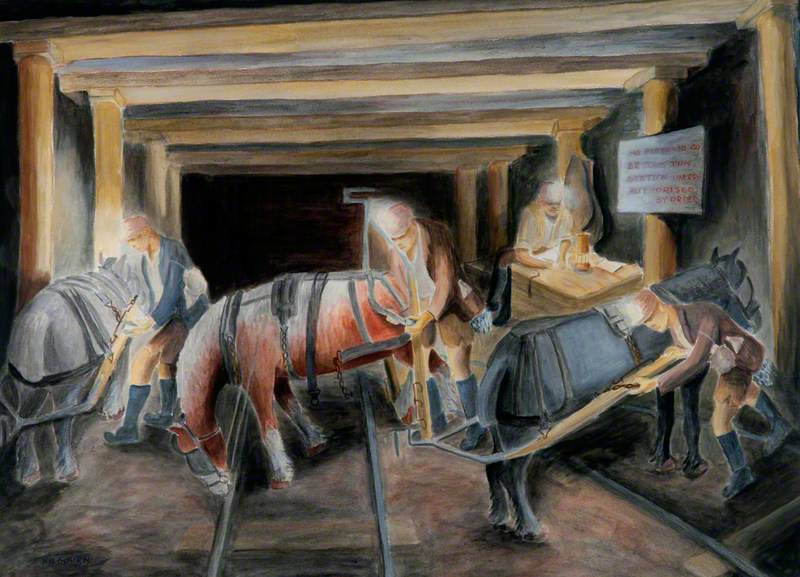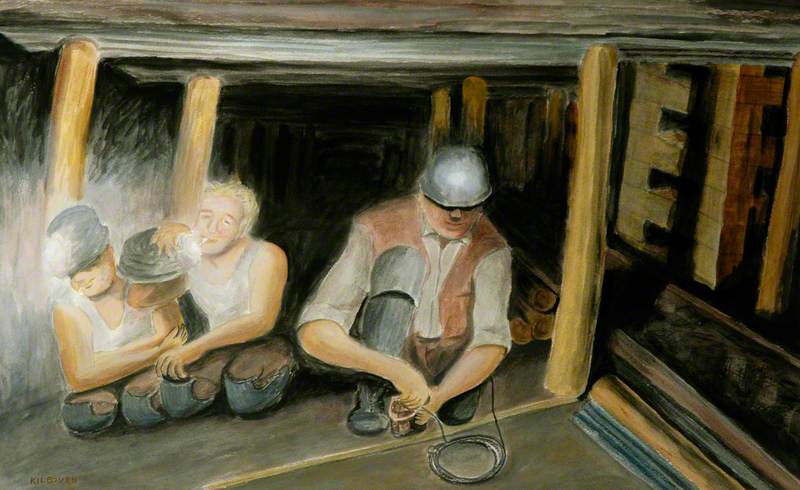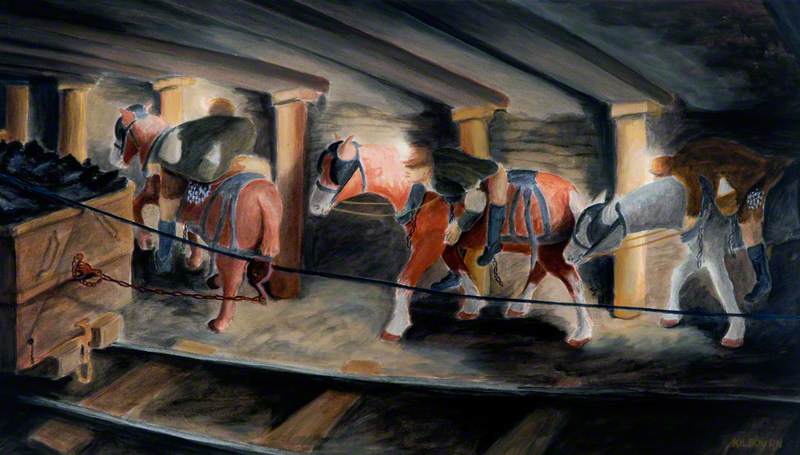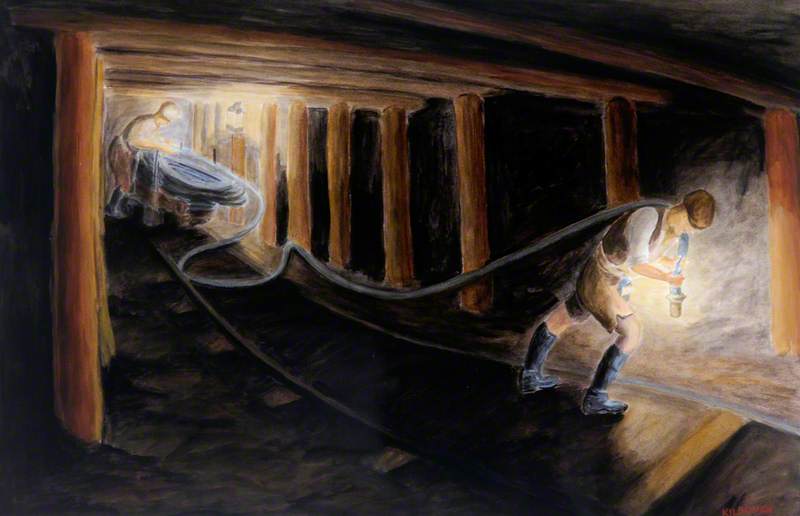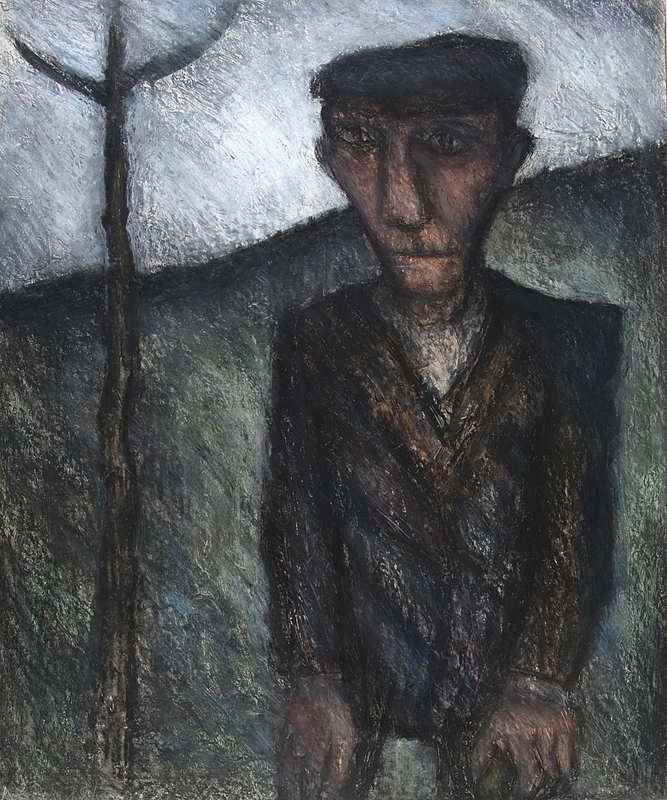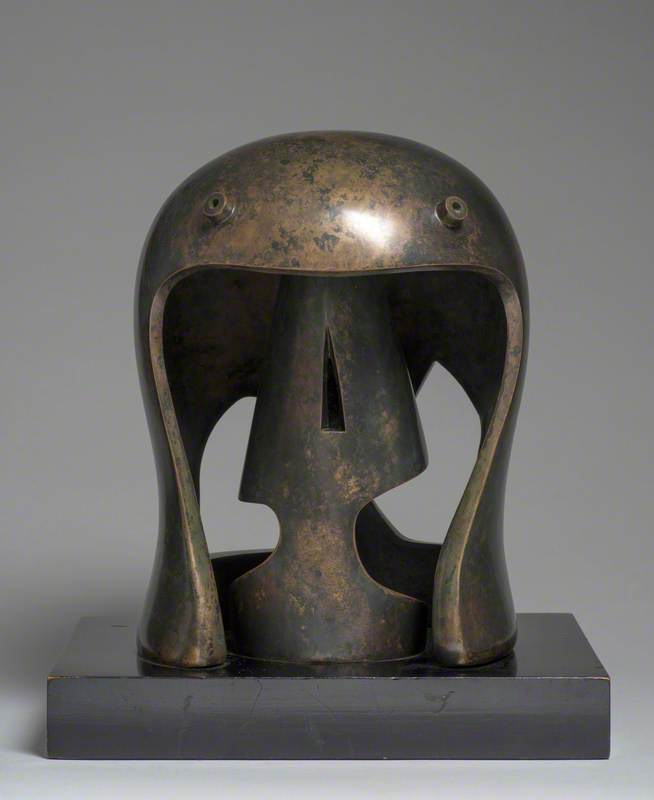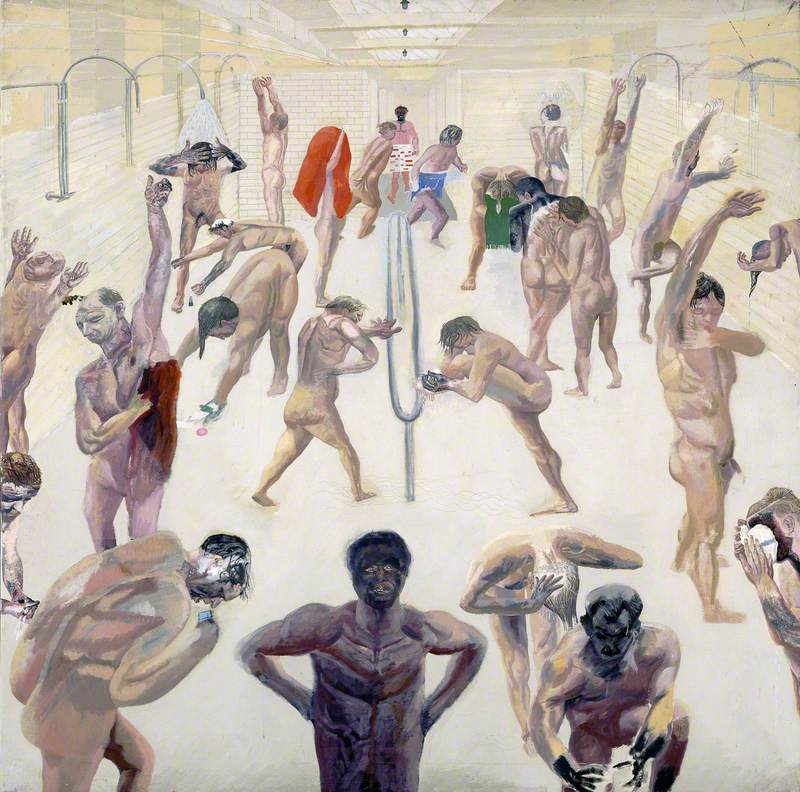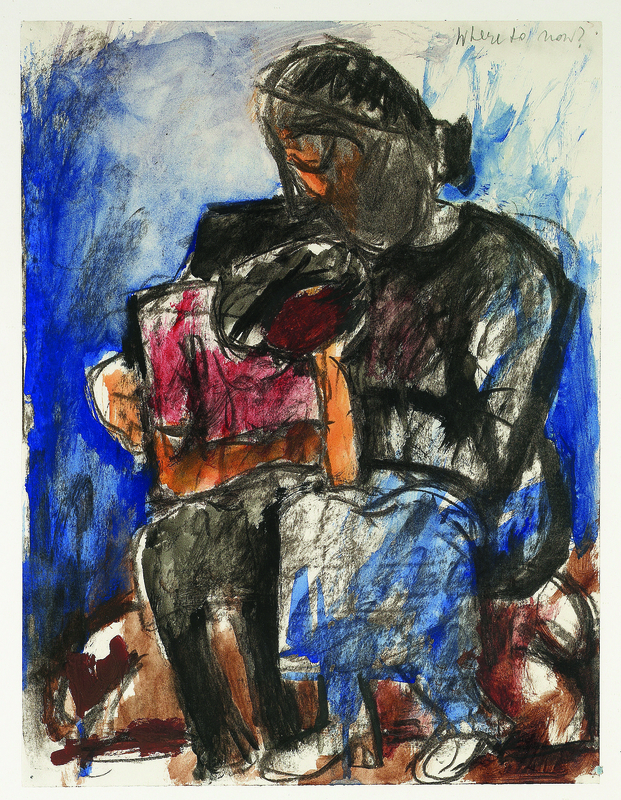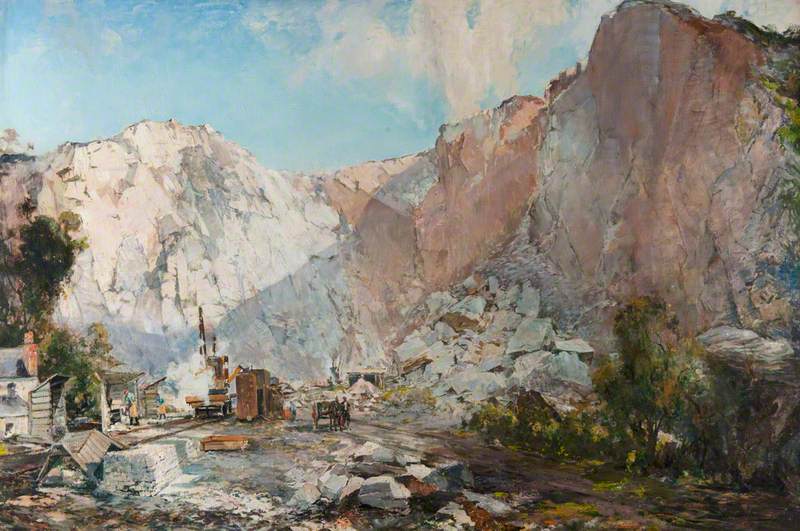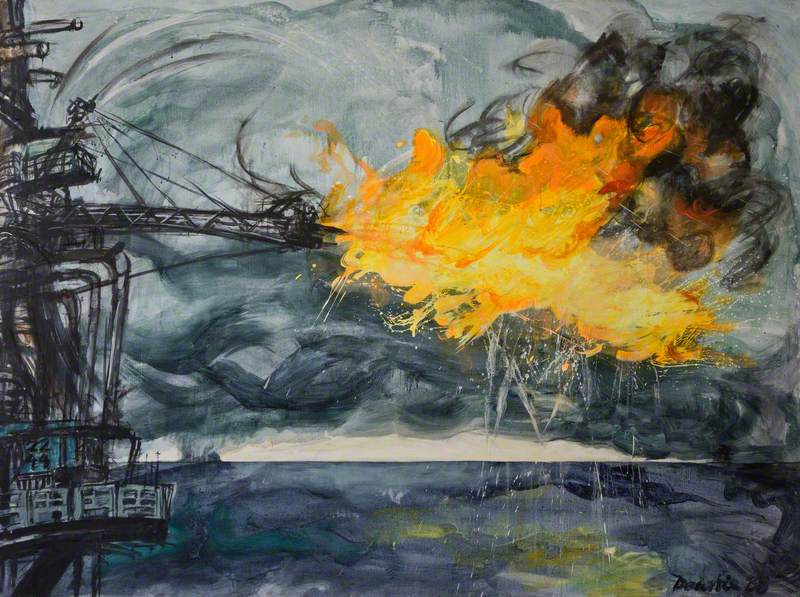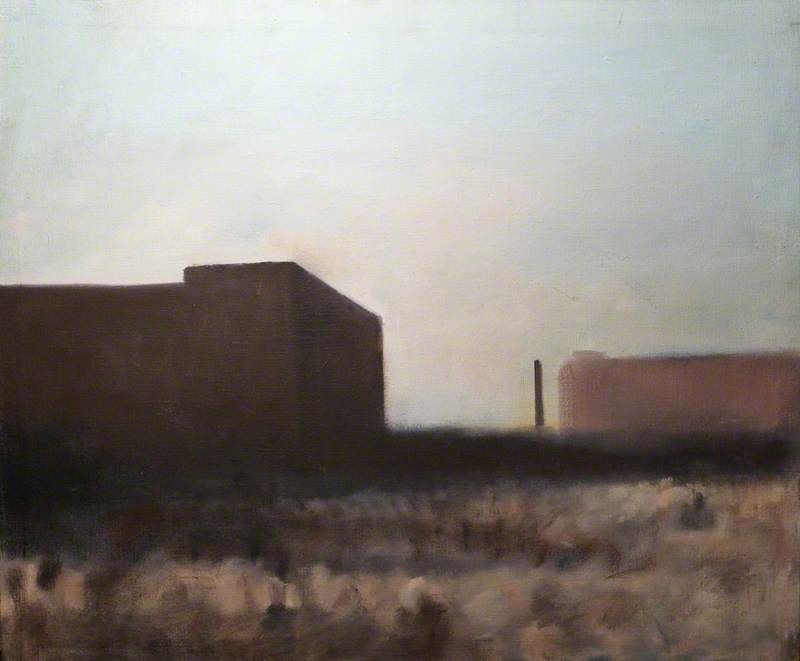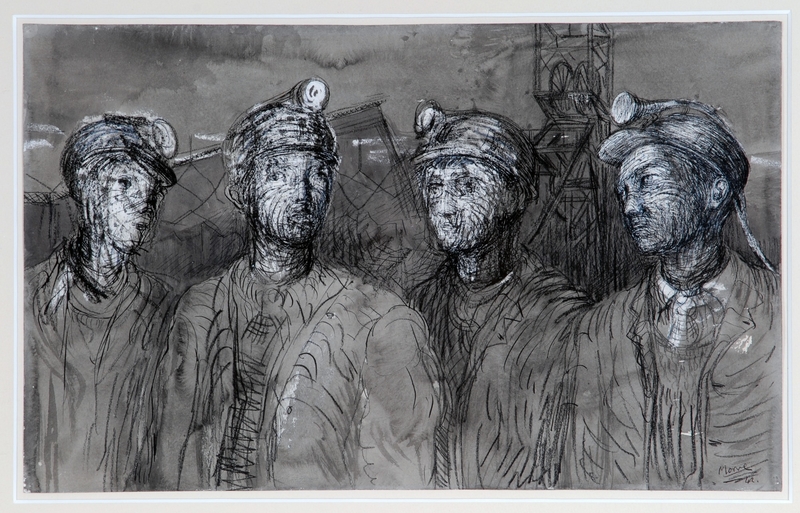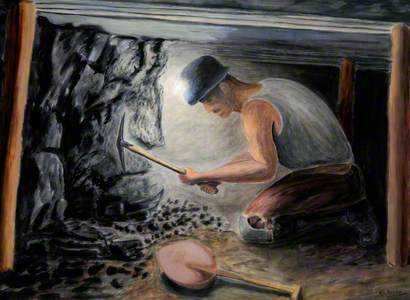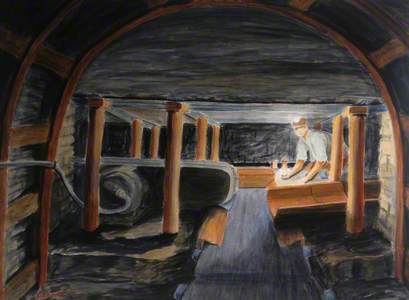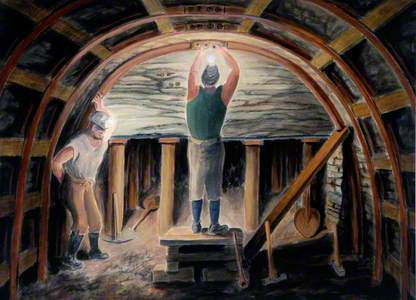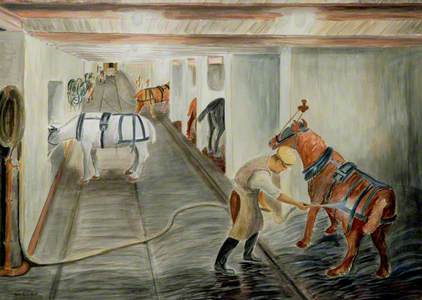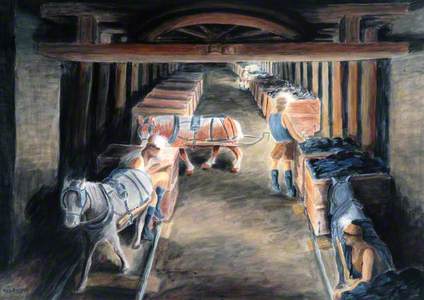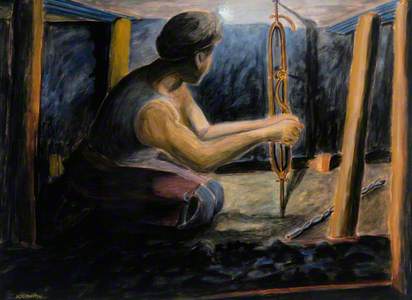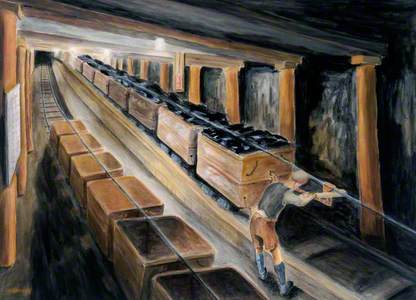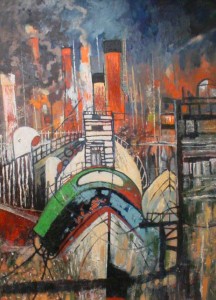'I couldn't express myself so well in words but I found that I could express my feelings and what I wanted to get over in drawing and painting.' – Oliver Kilbourn
Oliver Kilbourn (1904–1993) was born in Chestnut Street, Ashington in south-east Northumberland. Ashington was known as the 'biggest pit village in the world', a town that had developed entirely around the coal mining industry. Oliver's father had been injured in a mining accident when Oliver was 11 years old. Oliver started working at Ashington Colliery on 9th October 1917 when he was just 13 years old. He moved to nearby Ellington Colliery in 1924 and spent the rest of his working life there.
The first painting in the 'My Life as a Pitman' series, The Artist at the Age of 14 Raking Out on the Pom Poms is set in 1918, within a year of the young Oliver Kilbourn going underground to work. The 'pom pom' was a nickname for a Siskel coal cutter, one of the earliest coal-cutting machines. 'Raking out' meant cleaning the small bits of coal (known as the duff) and stone from the coal cutter. This would have been a dark, dangerous and dusty task.
Calling the Weigh
(from the series 'My Life as a Pitman') c.1975
Oliver Kilbourn (1904–1993) 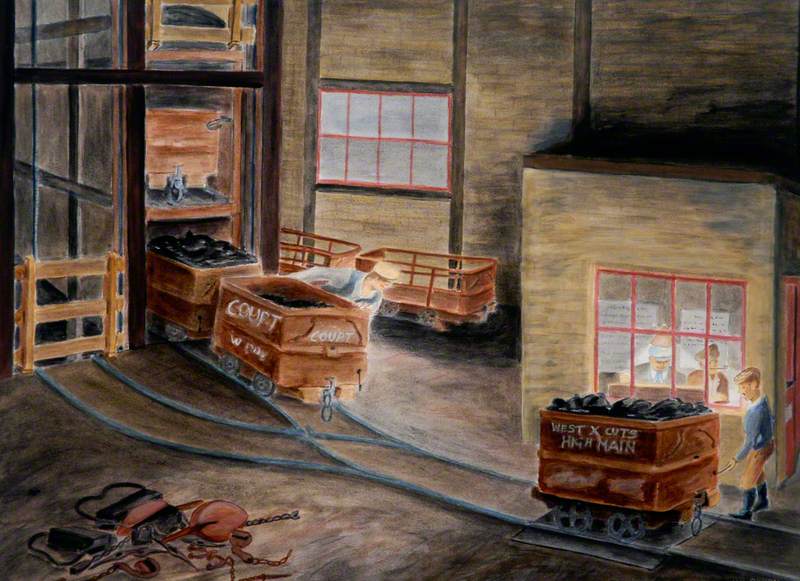
Another example of a role undertaken by young boys in the mining industry is depicted in Calling the Weigh. Coal fillers were paid by the weight of coal in the tubs they filled each day, so a weighman would weigh each tub. A junior miner would call out the unique token number of the filler attached to the tub. This system ensured that the correct weight of coal was credited to the correct filler. The second man in the cabin was the check weighman, employed by the Miners' Union to make sure that the filler's weights were correctly recorded.
'I wouldn't say I had a driving ambition to get down the pit, I just stayed down there fifty years – a working life. After a lot of groaning and grumbling you took a pride in your job, you know. It's a very skilful job.' – Oliver Kilbourn
The Galloway Field at Ashington Colliery
(from the series 'My Life as a Pitman') c.1975
Oliver Kilbourn (1904–1993) 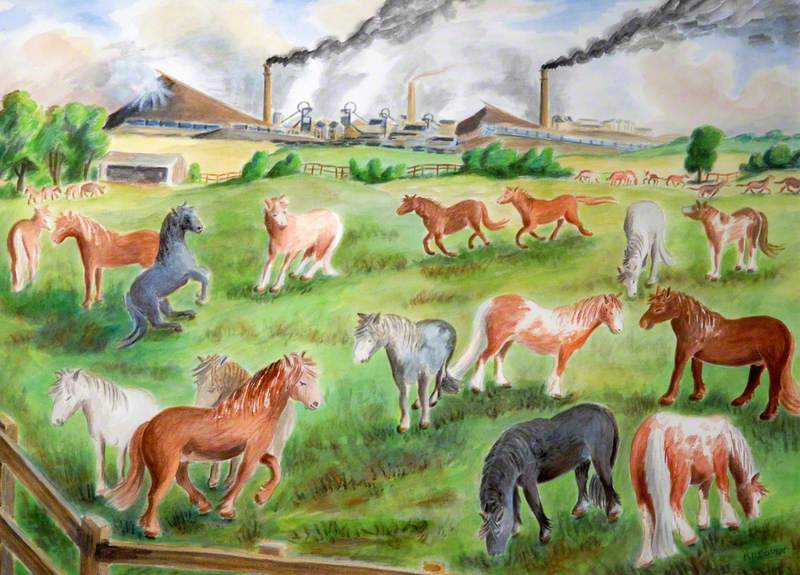
The Galloway Field at Ashington Colliery serves as a visual metaphor for the young boys of Ashington's community facing a working life underground. This vibrant painting stands out in the collection; a landscape full of light, colour and space in poignant contrast to the shadowy and cramped underground scenes. The painting depicts a field full of young ponies before they were broken in and trained to work underground. The dark form of the colliery looms ominously in the background with ash and smoke rising into the sky.
Lowse, End of Shift
(from the series 'My Life as a Pitman') c.1975
Oliver Kilbourn (1904–1993) 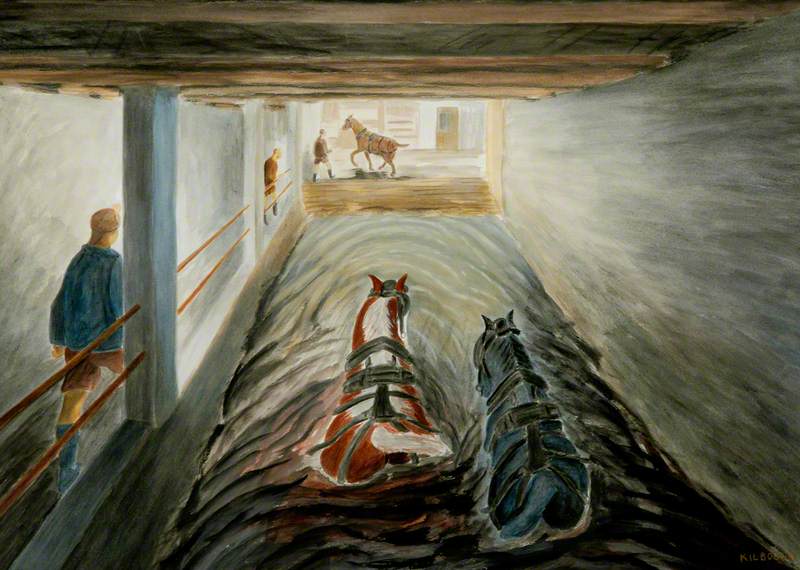
In 1934, Oliver became a founder member of The Ashington Group of painters. The group flourished for the following 50 years with Oliver an ever-present member. The extraordinary story of The Ashington Group of artists became world-famous through Lee Hall's 2007 play 'The Pitmen Painters', and Oliver Kilbourn the group's best-known member.
'In 1934 they [the Workers' Educational Association] started an eight-year course in art appreciation. This was the foundation of The Ashington Group, and art has been my main interest in my life since then.' – Oliver Kilbourn
Although most group members worked in jobs connected to the coal mining industry, Oliver was one of only a few members who spent his working life underground – he was an expert witness to the scenes depicted in 'My Life as a Pitman'.
'I was a damn good miner, though I say it myself. I was strong and I liked the life. That was the life I painted.' – Oliver Kilbourn
Filler Filling Tub
(1) (from the series 'My Life as a Pitman') c.1975
Oliver Kilbourn (1904–1993) 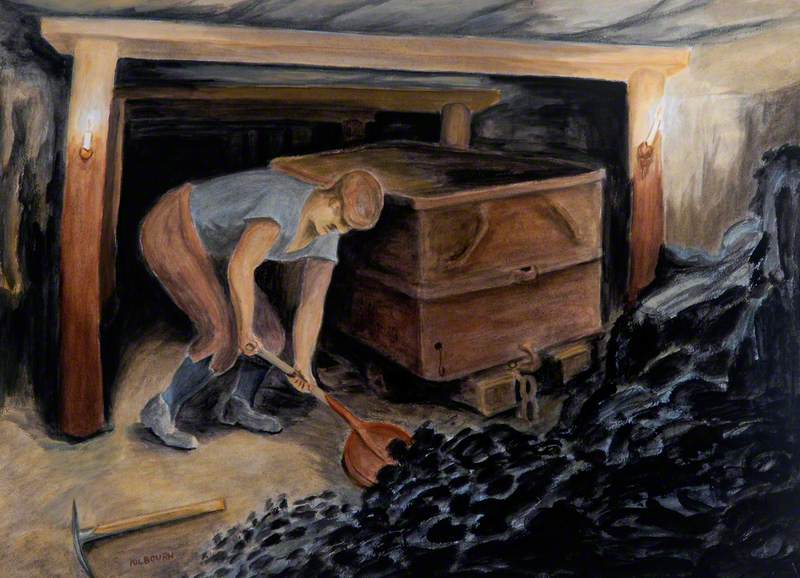
Oliver was proud of his working life as a miner and keen to show that jobs like filling a coal tub, which may seem simple, required serious skill, strength and grace. A series of three paintings titled Filler Filling Tub depict a coal filler working in challenging dark and cramped conditions from different perspectives.
Filler Filling Tub
(2) (from the series 'My Life as a Pitman') c.1975
Oliver Kilbourn (1904–1993) 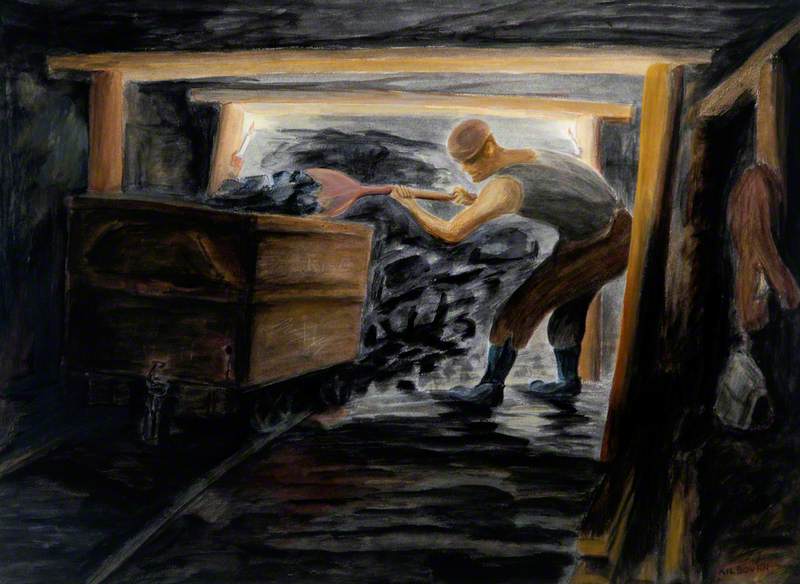
Filler Filling Tub
(3) (from the series 'My Life as a Pitman') c.1975
Oliver Kilbourn (1904–1993) 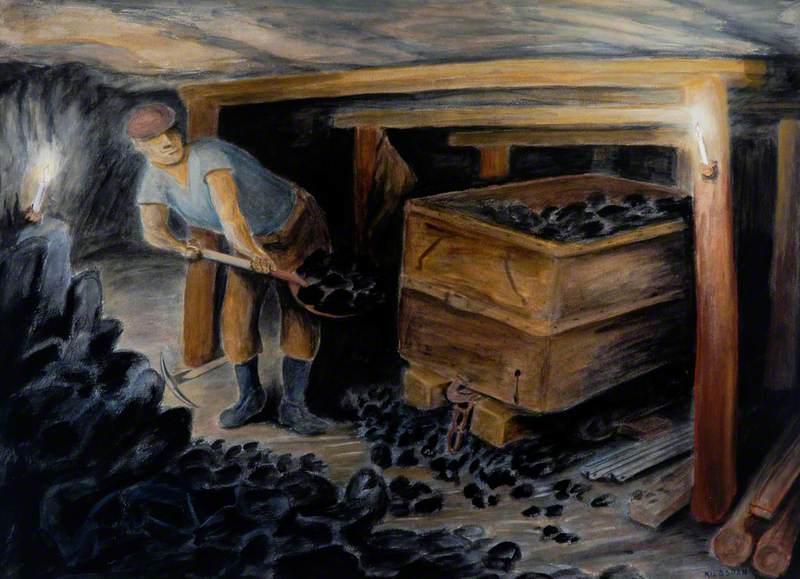
Get on! How-way!! SANDY!!!
(from the series 'My Life as a Pitman') c.1975
Oliver Kilbourn (1904–1993) 
The paintings in this series offer valuable insight into local terms for the roles, processes and equipment used in the Northumberland coalfield. In Get on! How-way!! SANDY!!! the pony and putter are shown struggling to move a tub full of coal (which would have weighed about half a ton) onto the end of the underground track. The putter's back was protected by a piece of leather known locally as an 'arse flapper'.
Coalface Drawer in the Goaf
(from the series 'My Life as a Pitman') c.1975
Oliver Kilbourn (1904–1993) 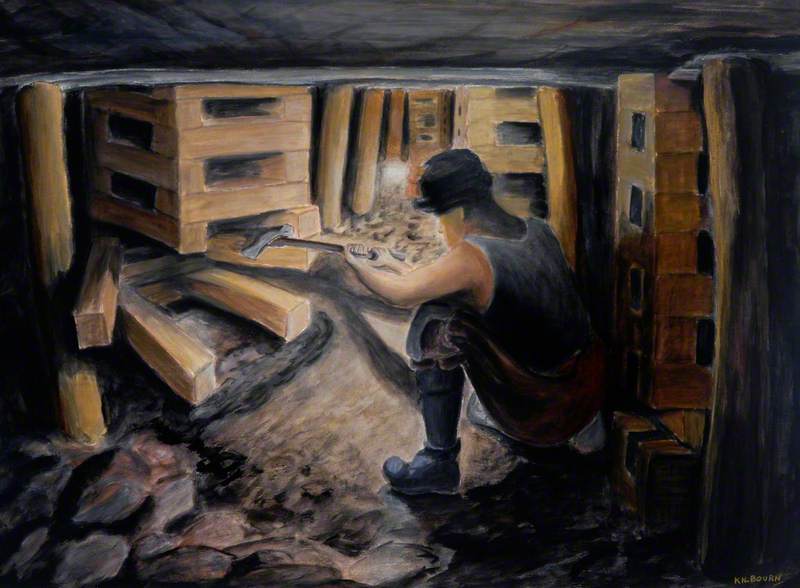
Oliver spent many years working as a salvage drawer, a skilled job that could also be very dangerous. Drawers would move coal, machinery and equipment underground and retrieve materials for re-use after an area had been mined. Coalface Drawer in the Goaf shows a drawer salvaging a 'chock' (roof support) after the coal has been mined. The 'goaf' is the part of the pit from which the coal has already been mined.
Setting Foreset
(from the series 'My Life as a Pitman') c.1975
Oliver Kilbourn (1904–1993) 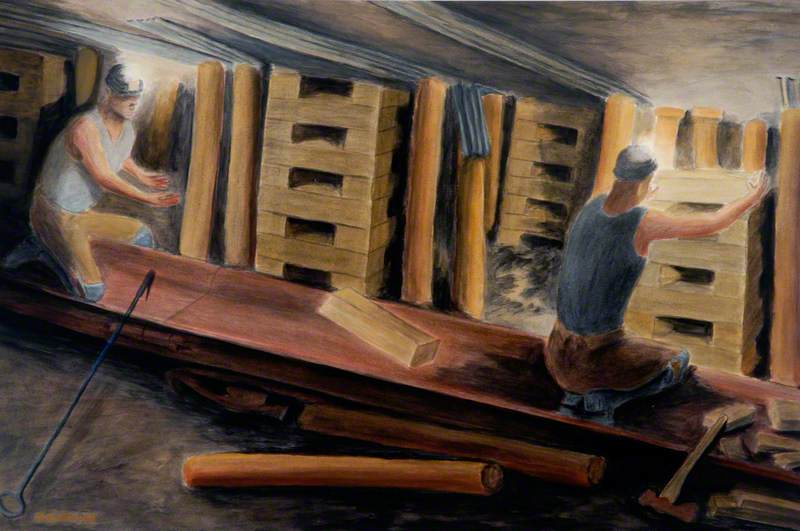
In the 1970s, after retiring from pit work, Oliver decided to paint his mining memories.
'After I retired I had quite a lot of time on my hands and I thought it wouldn't be any harm if I painted something I really knew about; and so I did My Life as a Pitman.' – Oliver Kilbourn
Drilling Shot-Hole by Hand
(2) (from the series 'My Life as a Pitman') c.1975
Oliver Kilbourn (1904–1993) 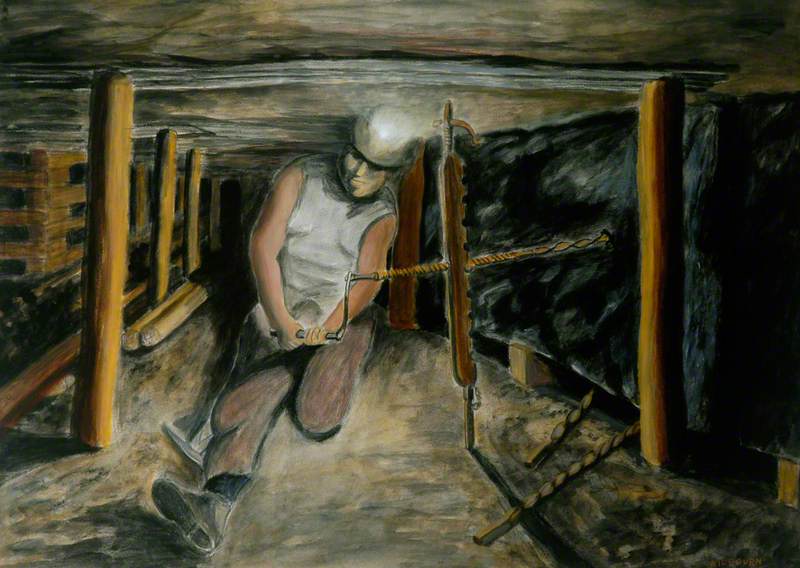
The resulting collection of 39 paintings was first exhibited in 1977 and is now housed at Woodhorn Museum in Ashington. The body of work serves not only as a remarkable artistic achievement and personal autobiography of Oliver's working life, but also an important historical record of twentieth-century coal mining in Northumberland.
'Oliver Kilbourn: My Life as a Pitman' is on special display at Woodhorn Museum until Sunday 15th September 2024 as part of the 'Ashington Group 90' programme celebrating 90 years of the Pitmen Painters. The Ashington Group collection is on permanent display at the museum.
Liz Ritson, Director of Programmes and Engagement at Museums Northumberland
With thanks to The Ashington Group Trustees and particular credit to the essays and work of William Feaver from which much of this article has been adapted
